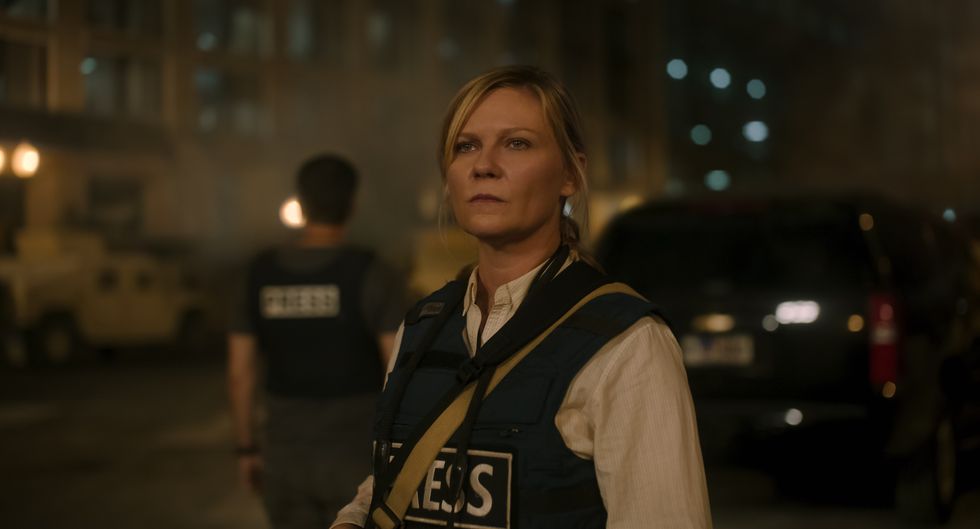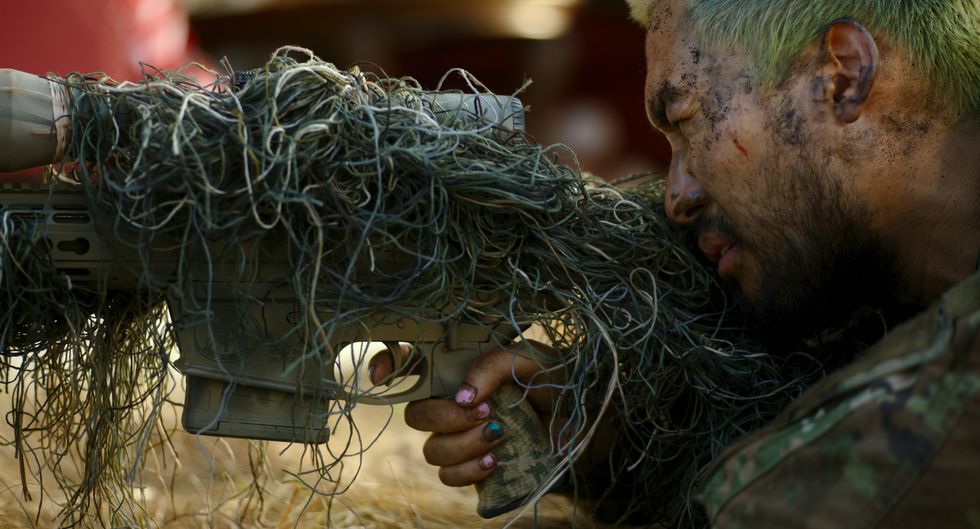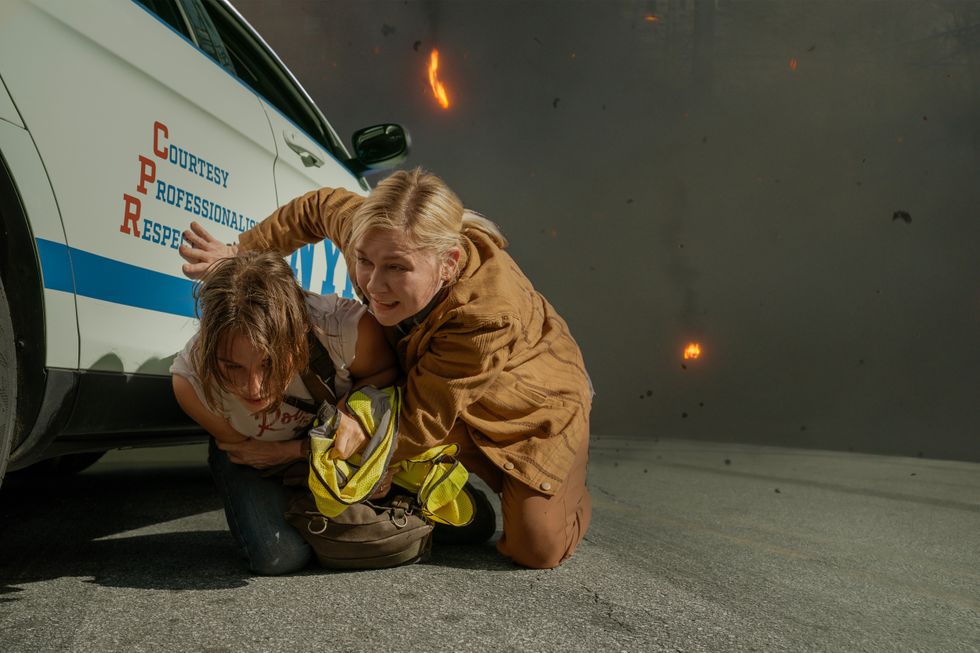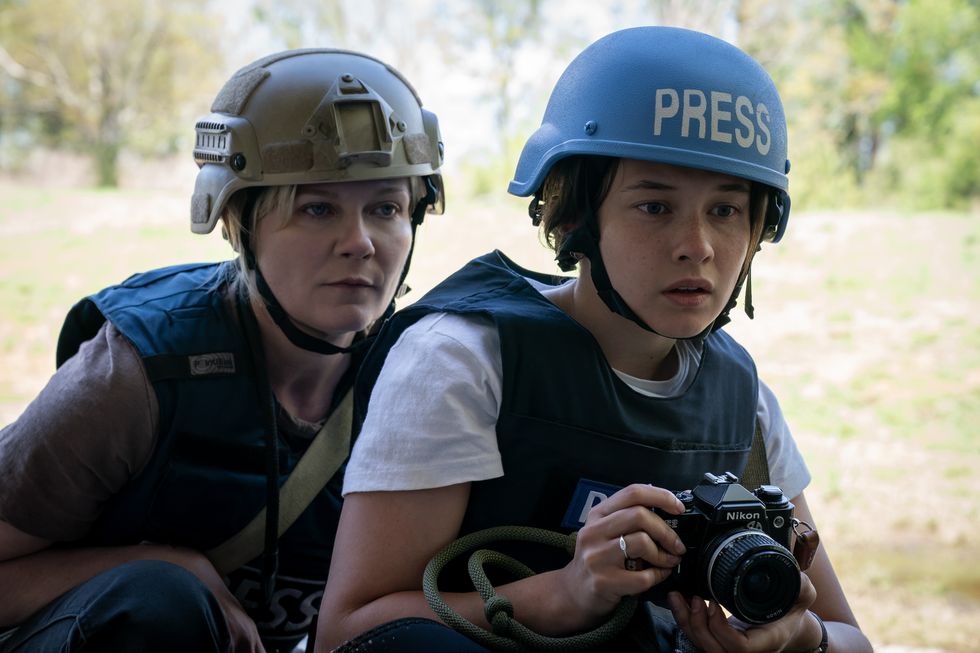Why Errol Morris Thinks the Best Movies Are Made With a 'F*ck You!'
With Errol Morris, it's never a conventional interview.

Interviewing Errol Morris, one of the most celebrated interviewers of nonfiction film, was daunting, to say the least. I went into the interview with extensive notes and a slew of questions about his latest film, The B-Side: Elsa Dorfman’s Portrait Photography, that I hoped were unconventional and unique.
Much to my surprise, I didn't get the chance to ask any of these questions. Rather, the interview went in a direction wholly unexpected: it was about me as much as it was about Morris and the subject of the documentary. Instead of a Q&A between journalist and subjects, the interview morphed into a collaboration between the interviewer and the interviewees.
But Errol wasn’t the one asking the questions. It was Elsa Dorfman. Once I surrendered to the flow of things, I was like “putty in [their] hands,” a sensation Dorfman herself experienced during the filmmaking process.
"There’s a very important element in all work that I like, which I would call the 'fuck you' element.'" —Errol Morris
The B-Side: Elsa Dorfman’s Portrait Photography is Morris’ ode to Dorfman, a longtime friend, kindred spirit, and artist whose medium was the Polaroid Land camera that produced a 20x24 image in 90 seconds. Dorfman's subjects ranged from the average joe to famous intellectuals and celebrities such as Alan Ginsberg to herself. Shot over the course of four days, Morris interviews Dorfman while she pores over her archive, a vast treasure trove of material. When shooting clients, Dorfman would take two pictures; the subject would get to choose between one of the two prints. Sprinkled throughout the "reject prints," or the B-sides, are more intimate portraits of friends, family, and herself.
But the simplicity of the film's premise is misleading. Dorfman, just like her art, takes the element of the quotidian and lifts it in a remarkable way. Dorfman's presence alone is enough to carry the film, for she imbues the documentary with warmth, humor, and poetic complexity. It’s ridiculous, Errol calls it, and “I’ve often thought that there is a very close connection between the profound and the ridiculous. Elsa proves that principle.”
Both Morris and Dorfman are preoccupied with what Morris describes as the "quixotic business of preserving time." Our conversation mirrored Errol’s own approach to filmmaking; in writing this article, I had to accept that this piece would rely upon my own vulnerability as much as it hinged upon the vulnerability and openness of my subjects. By publishing a Q&A that was largely directionless, unmediated, I would reveal an element of Morris’s interview process that has rendered such revelatory and surprisingly intimate dialogues with subjects that have so much at stake by speaking honestly, like David Harris’ confessing to an evaded murder on camera in The Thin Blue Line or Holocaust denier and electric chair repairman Fred A. Leuchter Jr. in Mr. Death.
Think of this Q&A as, to quote Morris, both a gentle “fuck you” to the expected structure and an interview method that might serve as a source of inspiration directly from the master interviewer himself.
No Film School: Errol, Can you tell me a little bit about your interviewing process insofar as it pertains to interviewing a friend that you're already intimate with?
Errol Morris: I try not to be overly intrusive—not to interrupt, not to ask too many questions. The goal was to capture Elsa, and I hope I have been successful at it. Elsa holds her own really quite well, so really just giving her a canvas, so to speak—giving her an opportunity to speak—is enough. She’s an incredible presence. She always has been. I’ve known for years and years that she would be a good subject for a movie. I just didn’t get around to making it until now.
NFS: I was struck by while watching your movie was how afraid I am to have my picture taken. It was moving to hear you talk about it with regard to yourself and Allen Ginsberg. I want to be the kind of person who is not afraid of my surface self.
Elsa Dorfman: Well, for one thing, with the Polaroid, you’d be very hard to photograph....Is that really red hair?
NFS: Ah, no, it is not.
Dorfman: Oh, well, that’s good because redheads are really impossible to photograph, at least on Polaroid film. And see how your eyes are very green? Haven’t you ever noticed that you blink in photographs?
NFS: I absolutely blink in photographs, this is very true! Or if I don’t blink, in the case of flash photography, my eyes always succumb to the demonic looking red-eye affect.
Dorfman: Right! And that’s just biology; you could never help it. I remember every green-eyed person I’ve ever photographed. They’re rarely sprinkled into the population. I think I haven’t done as many as 10.
NFS: Wow! I’m so used to digital photography that it just occurred to me why the likelihood of blinking would make your trade so difficult. You only have two chances to catch a green-eyed person blink-free. Like you said in the Stranger Than Fiction Q&A last night, photography is all about chance.
Dorfman: Right! I usually know how things are going when I photograph my subjects. The thing I don’t know or can’t predict is something that happens at the last minute, like a blink.
That’s why I think so many pictures are gifts. It comes down to chance. I think there’s a big miracle factor in photography because it nails down a millisecond—it’s that little sliver of time preserved on this piece of paper, but it could easily be the second before or the second after.
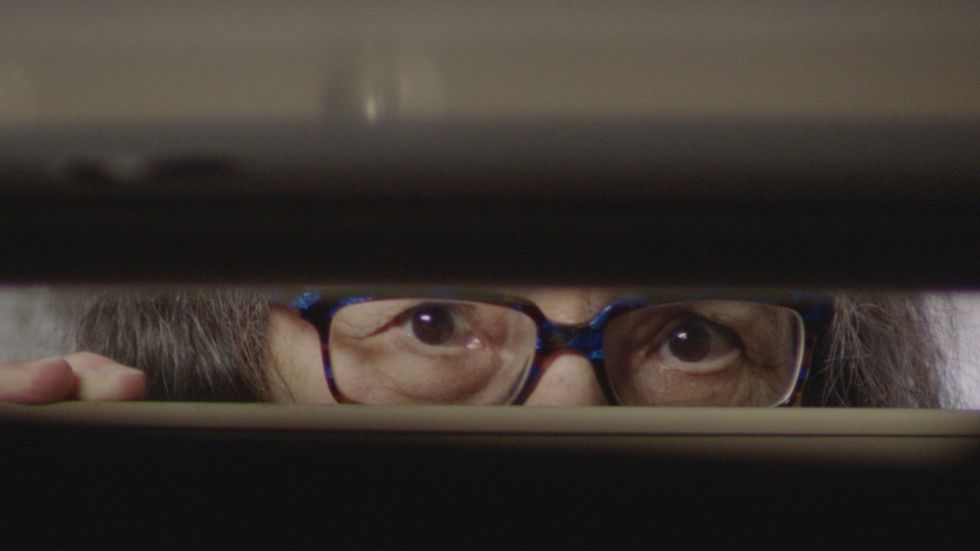
Dorfman: Where did you get the idea for that thing ring on your tooth? What is that?
[Editor's Note: The writer has an upper lip frenulum piercing, which goes through goes through the thin tissue that connects the upper lip to the middle of the gum.]
NFS: [Laughs] It’s actually a piercing, although, every once in a while, it gets confused for a gold tooth. One time someone straight-up asked me if I had a grill… which I will refrain from explaining.
Dorfman: And what does it do?
NFS: I suppose it works because I lose every piece of jewelry I own unless it's screwed into my body. That means no rings, no necklaces, not even earrings unless they’re something I can’t really take out.
Dorfman: That’s really interesting. You’re the first person I’ve ever met to have one. Nobody has ever come to me for a photograph that has one. What did your mother say?
NFS: She cares more about my tattoos—
Dorfman: Aha! I was just going to say: Which is worse, when your daughter comes home and there’s a ring right over her teeth or tattoos all over her body? So, that’s what happens when you’re a portrait photographer… all of these exchanges we just had about your body and your surface appearance. This, exactly.
Errol Morris: What’s impressive is how Elsa notices everything. You can’t hide anything from Elsa.
NFS: That is one of the many reasons why I love to write: interacting with directors. They can see right through me, especially if they’re a documentarian, or a fiction filmmaker that uses documentary techniques. I have to be myself—there’s no avoiding it because they’ll call me out.
Dorfman: But you also can tell how they’re reacting to you. I think it would be fun to have tattoos like you do, and that thing in your mouth. It would be fun to see who are the people that, you know, you’re sitting and having coffee, and they don’t say a word about it.
Morris: You’re being presented with something and you’re saying absolutely nothing. You’re much much, much better at it than I am. It’s a curiosity about the world.
Dorfman: And not being afraid of it, either.
Morris: Not being afraid of jumping into the pool, as it were.
NFS: I have a quick question for you….
Dorfman: Yes…? Wait. I just found a tattoo of yours!
NFS: Oh, yeah! This one is a shark tooth.
Dorfman: But why don’t you have an arrow! Wouldn’t that be great? I thought it was an arrow.
NFS: An arrow?
Dorfman: Like… where the brains are! Pointing to your brains! That’s good for your field! The brains!
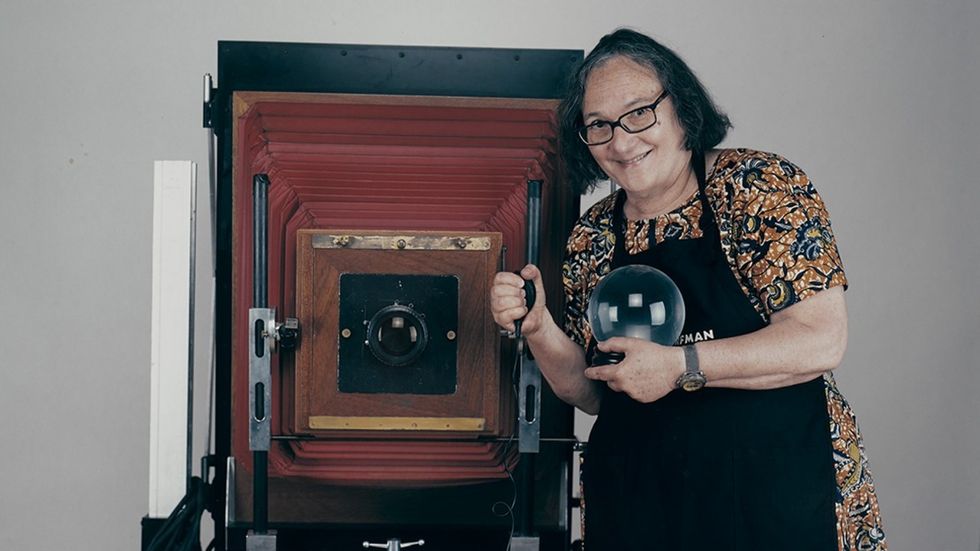
Morris: Let me tell you something about tattoos: they become addictive! The people that I know that have got them keep getting them. They cannot stop.
NFS: Oh, yeah it’s true.
Dorfman: What is it from? Is it from the feel of it?
NFS: It’s meditative for me, the feel of it. And every time I break up with someone, I get something crazy—a piercing or a tattoo.
Dorfman: Like a dictionary!
NFS: Defining this person in my life by marking them and their impression on my body.
Dorfman: I would be tattooed all over the place if I did that because Harvey [Elsa's partner] and I broke up about eight times.
Morris: Really?
Dorfman: Well, we were on and off for about eight years. More on than off, obviously.
NFS: What would you say to a young filmmaker or a young documentarian filmmaker about interviewing people?
Morris: You want to get a good performance out of everybody—it doesn’t matter if they’re a war criminal or a friend.
Dorfman: It’s the same with a photograph.
Morris: Well, what’s interesting about Elsa's work is that it's the anti-Vanity Fair. There’s something about the absence of flash in your work that has always attracted me. It’s like you’re the contrarian.
Dorfman: You can count on me to be contrary.
Morris: I always think there’s a very important element in all work that I like, which I would call the "fuck you" element. "I’m going to do it this way; fuck you!"
NFS: Yeah, I loved that in the movie. You said, "Fuck you, galleries! I’m going to sell my work on the sidewalk."
Morris: I think I have, more or less.
NFS: Sold your films on the street?
Morris: No! But that’s coming next. I’m not so far off.
Dorfman: So what would I say to a 27-year-old.... Work for people you really admire, if you can manage. And try and get all that credential work out of the way.
Don’t get married too early. Be careful who you marry. And don’t get pregnant until you’re 35. At least 35! But get all the pregnancies out of the way by the time you’re 40. There’s just no way a woman can get around the ovaries. D
And don’t stop working when you have children.

